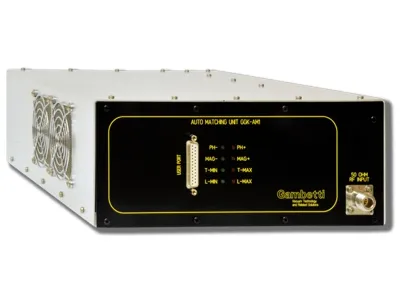AUTOMATIC MATCHING NETWORK – GGK-AM1
Introduction to adaptation networks In every plasma treatment system, the matching network constitutes a critical component.
The matching network’s purpose is to transform the complex (*) and variable impedance in keeping with the process conditions, in a purely resistive impedance, with a 50 ohm fixed value necessary for the correct operation of the coaxial transmission line and the RF generator. This operation favours the condition of maximum transfer.
The adaptation circuit consists of an ‘L’-type network (but a ‘T’-type configuration can also be chosen) comprising a fixed inductor and a pair of air-variable capacitors. The position of the capacitors is controlled by means of positioning motors.
During operation, commands must be provided via the connector on the front panel.



